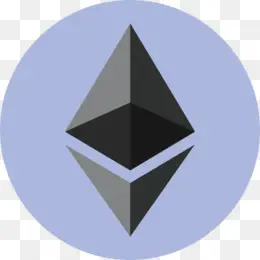Table of Contents
Market makers are the unsung heroes of financial markets. From driving trading volumes for exchanges to facilitating large-size orders without extensive market impact, market makers engage in various activities to improve trading conditions.
In the crypto ecosystem, market makers play an even bigger role than legacy systems because of the absence of liquidity, which becomes more apparent in a bear cycle. Without strong market makers, price slippage increases and price discovery of newly launched tokens becomes difficult.
So, market makers have much to do with bringing stability to crypto trading platforms for other market participants to buy and sell easily. This article will discuss everything you need to know about market making, including how market makers earn money and different ways they can manipulate the market.
Who Is Market Maker?
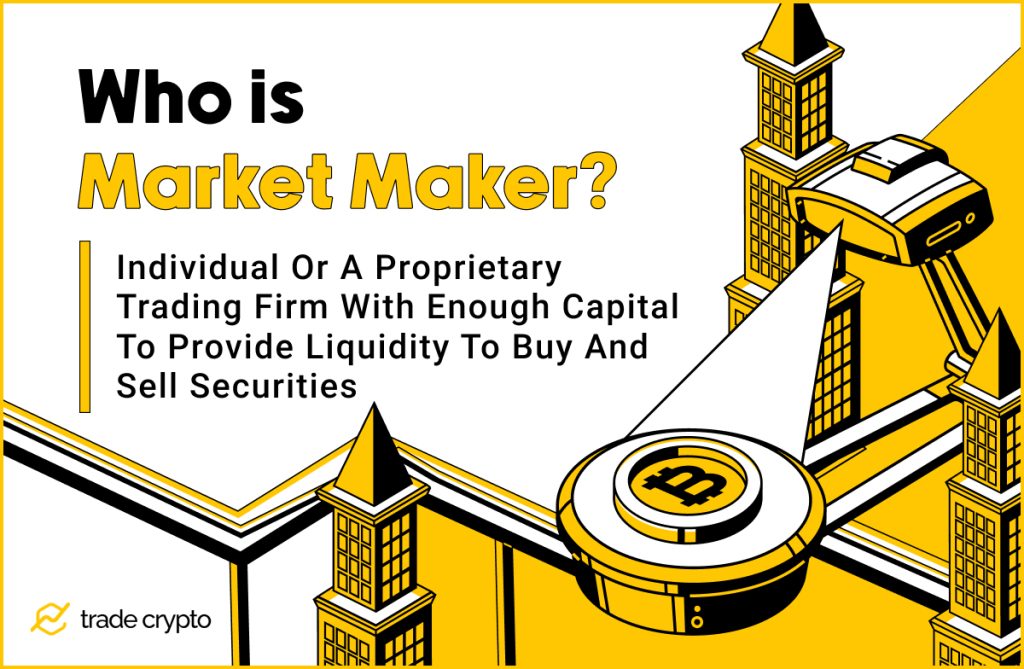
A market maker is an individual or a proprietary trading firm with enough capital to provide liquidity to buy and sell securities on stock exchanges, like New York Stock Exchange (NYSE). In the case of crypto, a market maker is a broker-dealer who deals with tokens and brings them into circulated supply by registering on centralized exchanges like Binance and Coinbase.
You can think of market makers as the farmers who bring vegetables and fruits to your nearby supermarket. And the supermarket acts like an exchange to provide market participants with the best service possible to trade on various tokens with no liquidity issues.
Along with adding liquidity to primary trading pairs, market makers are also responsible for creating a market for the underlying derivative contracts of crypto tokens, whether futures or options contracts. For adding much-needed liquidity to these markets, exchanges give market makers several benefits, including higher order rate limits and discounts on transaction costs.
How Market Makers Make Money?
Market makers make money in multiple ways that vary in trading day style, and profits earned. Let’s understand each in more detail.
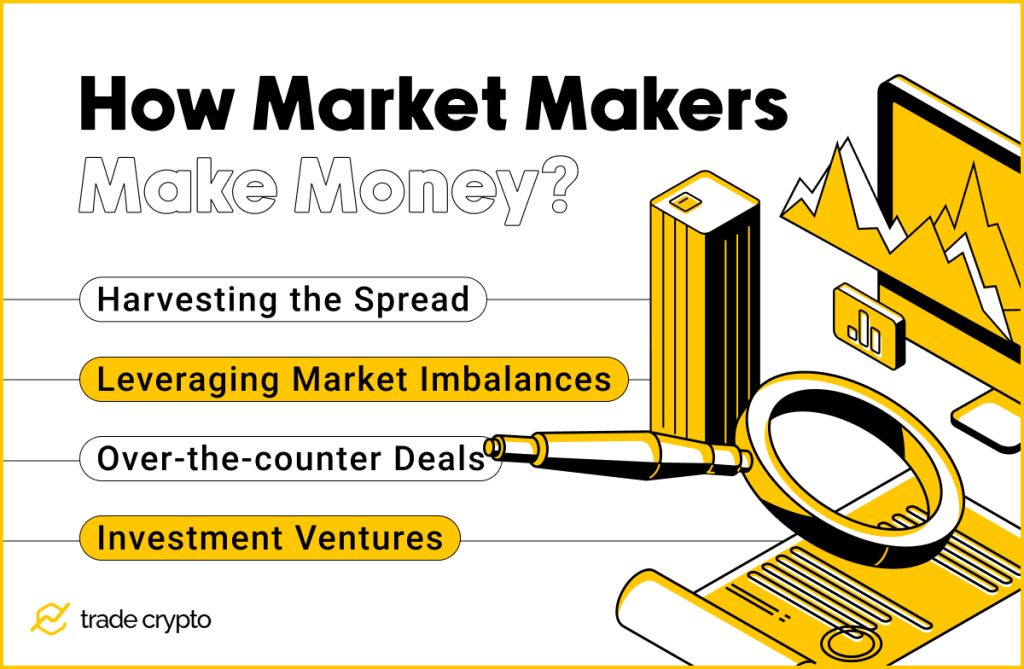
Harvesting the Spread
The first-way market makers profit is by earning the spread between the ask and bid price. Irrespective of the asset, the buyer’s highest offer is never the same as the lowest offer a seller is willing to accept. So, the difference between the two is called a bid-ask spread that market makers leverage to make a profit. While it can be tiny at first, it quickly adds up to tens and hundreds of millions in daily trading volume.
Leveraging Market Imbalances
The second way market makers operate to rake in tons of profits is by absorbing and unloading huge quantities of tokens when markets take wild turns in either direction. For example, the market got hit with bad news, and investors panicked, selling with demand drying up.
To help stabilize the prices, market makers absorb the selling pressure even though they take on losses in the short term. When the markets recover and the dust settles down, they unload slowly to book profits on a major price swing. This is possible for market makers who have sufficient inventory.
Over-the-counter Deals
Designated market makers also facilitate institutional investors and blockchain projects in carrying out large-size orders on the spot and in derivative markets. To avoid market impact, market makers provide trading services with algorithmic strategies like TWAP or VWAP. This also helps achieve the desired price point to buy or sell a token. For this transaction, market makers quote a higher cost than the current market price to earn the difference. If it’s a sell order, the quote will be lower.
Investment Ventures
Most makers also have an investment arm to diversify their earnings into early-stage companies. This gives market makers more inventory to create a future market when the company issues a token. So the added cash flow is a bonus for market makers on top of receiving tokens at a discounted price.
Can Market Makers Manipulate Cryptocurrency Prices?
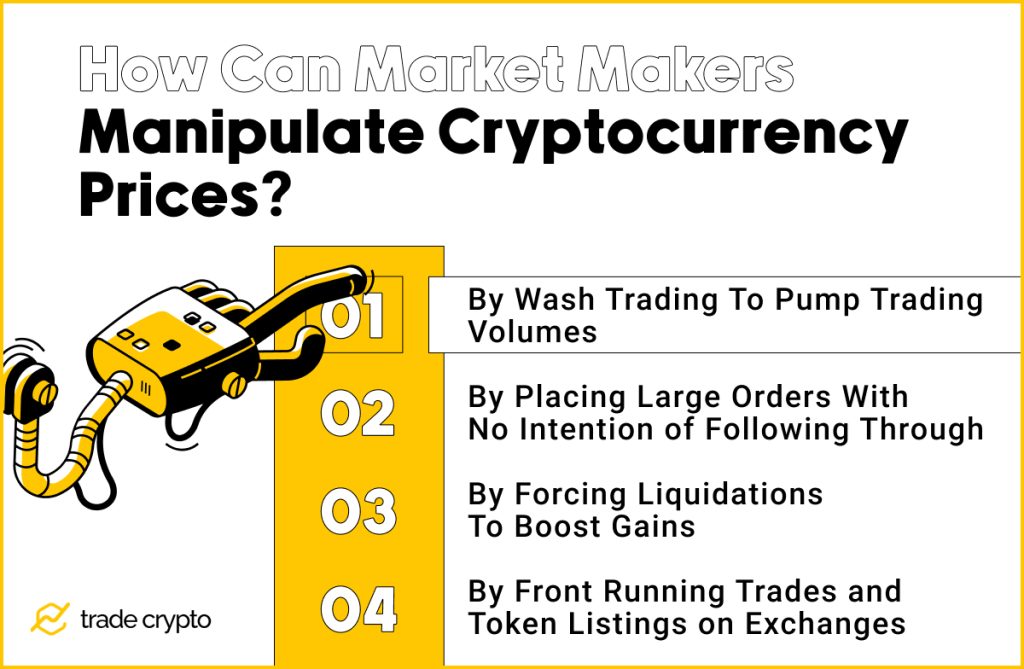
In every financial market, it is possible to manipulate asset prices by someone with large amounts of capital with information asymmetry. This is more likely in crypto markets because regulatory oversight of government authorities like the Securities and Exchange Commission is not widespread. To avoid being on the wrong side of the trade, you must understand how the “smart money” plays the game.
Wash Trading To Pump Trading Volumes
Wash trading is a practice to create an illusion of an active and highly liquid market for a token. It is fairly easy to wash trade in crypto markets because identity verification is not stringent.
Market makers wash trade to attract new traders in the market. In most cases, these market makers hold the majority of the supply, giving them ultimate power to decide the next price move in the market. So when new money flows in, and actual liquidity hits the market, market makers can dump their tokens for huge profits.
Placing Large Orders With No Intention of Following Through
Checking the order book to see market depth is a common practice followed by every trader. When they see a huge buy wall at a lower price, the level can act as support and the price will stabilize or increase. But this can easily be invalidated by market makers.
By placing large orders, market makers can trick the market into keeping the price artificially high. At the same time, they can slowly unload tokens to book profits. When profit-taking is done, they can remove the large order, leading to a sharp decline in a short period. This fake order tactic can also help market makers to capitalize on the large spread.
A good market maker will rely on iceberg orders to execute a big trade. For example, if a market maker wants to sell 50,000 BTC, they can’t do that in a single trade. Instead, they have to make multiple small orders and sell over an extended period. These orders are hard to track because you have to dig through the level-2 order book.
Forcing Liquidations To Boost Gains
When a market is as overleveraged as crypto, whale token holders like market makers can cause mass liquidations for short sellers by propping up prices. While the liquidation happens, they can open an opposite position with a similar size to maximize gains.
A simple way to check if any market maker is forcing liquidations is to see the premium of longer-term contracts on perpetual futures. This can help you understand how whales of the market are thinking about price direction.
Front Running Trades and Token Listings on Exchanges
Having information before the public is a big advantage to market makers. For example, suppose a market maker is responsible for creating a market for a newly listed token. In that case, they can easily accumulate tokens for lower prices before the listing and immediately sell to dump on retail investors and traders.
In terms of front running, market makers have all the information of the trades placed on an exchange, giving them an unfair edge to profit off of every trade. As the volumes rise, the tiny amounts compound quickly and generate a new cash flow for market makers.
Top Crypto Market Makers
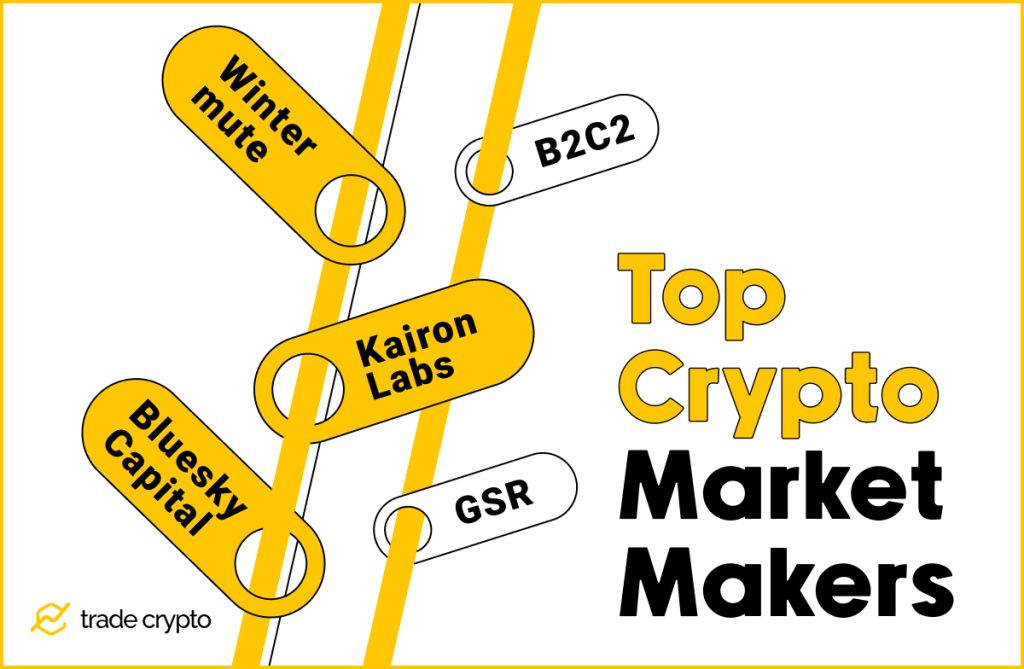
After the recent blowup of Alameda Research, the focus has shifted to leading market makers to learn what kind of risk management and trading strategies they follow. So, here are the top five crypto market makers you should know.
Wintermute
Even after a few setbacks this year with a $160 million DeFi hack and FTX exposure, Wintermute remains one of the largest market makers in the crypto industry. Founded in 2017, Wintermute has deep roots in crypto, covering both DeFi and CeFi markets. Over the last two years, they have facilitated over $2.8 trillion in trading volume on top exchanges, including Binance, Gemini, Kraken, and Coinbase.
Regarding OTC trading, Wintermute offers both spot and derivative trading services for over 200 digital assets. To access the trading terminal on Wintermute, you can use their nodes, partner integrations, and voice trading services. On the investment side, Wintermute has been active since 2020. They have supported over 75 projects, including zkSync, Polygon, Flare, and Optimism.
Kairon Labs
Another veteran market maker in crypto is Kairon Labs. With over four years in business, Kairon Labs has made its mark as a strong market maker with 50+ clients. Currently, Kairon creates markets for 100+ centralized and decentralized exchanges. The initial thesis behind starting Kairon was to provide liquidity to smaller-cap altcoins. As they filled the market cap, the company grew quickly to become an industry leader.
The standout qualities of Kairon Labs lie in its overall support system for companies. From market making to providing advisory services, this market maker has got everything covered. It also lists tokens on top crypto exchanges like Bitfinex, Uniswap, and OKEX.
B2C2
B2C2 is an innovative market maker in crypto with a large institutional presence worldwide. Like other top market makers, B2C2 provides tighter spreads with 24/7 liquidity. But what sets B2C2 apart is its tailor-made cross-product solutions for every client.
On spot trading, B2C2 supports 27 digital assets, including major stablecoins like USDC and USDT. In derivatives, there are options, CFDs, and NDFs for institutional investors seeking OTC services. B2C2 also provides loans to clients to improve capital efficiency. Based on the token used to take a loan, the collateralization rate varies on B2C2.
Bluesky Capital
Bluesky is an all-around market-making company that offers a wide range of trading and investment services. On the crypto front, Bluesky deals with market-making on small and large exchanges in spot and derivatives products. The firm also gives investment advice with a custom plan, including hedging and DeFi yield generation programs.
On the macro, Bluesky diversifies across all asset classes, like fixed income and equities, to generate uncorrelated returns with crypto investments. To join the market maker, you must be an accredited investor with a minimum investment of $100k.
GSR
GSR is among the market makers with the least exposure to FTX and managed to cover all client funds lost on the demised exchange. It is also one of the investors in the industry recovery initiative which Binance started.
The market confidence in GSR is primarily due to its risk management practices and robust market-making infrastructure. In addition, GSR is also involved in various DeFi activities as an investor and liquidity provider. Some DeFi integrations are Maker, Sushiswap, Uniswap, Curve, DYDX, and Aave.
Difference between Order Book Model vs. Automated Market Makers (AMMs)
We have discussed how market makers work on centralized exchanges that follow an order book model. This model allows limit orders, meaning a trader can publish orders lower than the current market price. But, in decentralized exchanges, it is not possible. DEXs are built with smart contracts that handle market-making in an automated fashion.
So, the main requirement of a market maker on DEXs is adding liquidity to one of the pools. Further, the price discovery of a token is not dictated by the market maker, but depends on the underlying algorithm and formula quoting the prices based on demand and supply. But the problem is the asset prices are slightly higher on DEXs compared to CEXs. That’s why people prefer to trade on CEXs.
As a market maker, the risks of adding liquidity don’t disappear just because it’s a decentralized platform. The risks of hacks and exploits persist, making it harder for market makers to commit large amounts of capital and resources on DEX platforms. The main usage of the AMM model on DEXs is to generate yields for investors.
Final Thoughts
Despite growth in trading volumes over the years, the crypto markets have still not matured enough. We need to see proper regulation for these industry players creating markets across various investment products with clear oversight. The regulation helps because it brings back the confidence in institutions and wider retail after what has transpired with the FTX exchange and Alameda market maker. The important matter for market makers is solving the liquidity problems on DEXs. As the emphasis is back on decentralized protocols for asset management, it is essential to have smooth onboarding for investors for seamless trading.
Crypto Ping Pong Digest
Trash style news. You will definitely like







